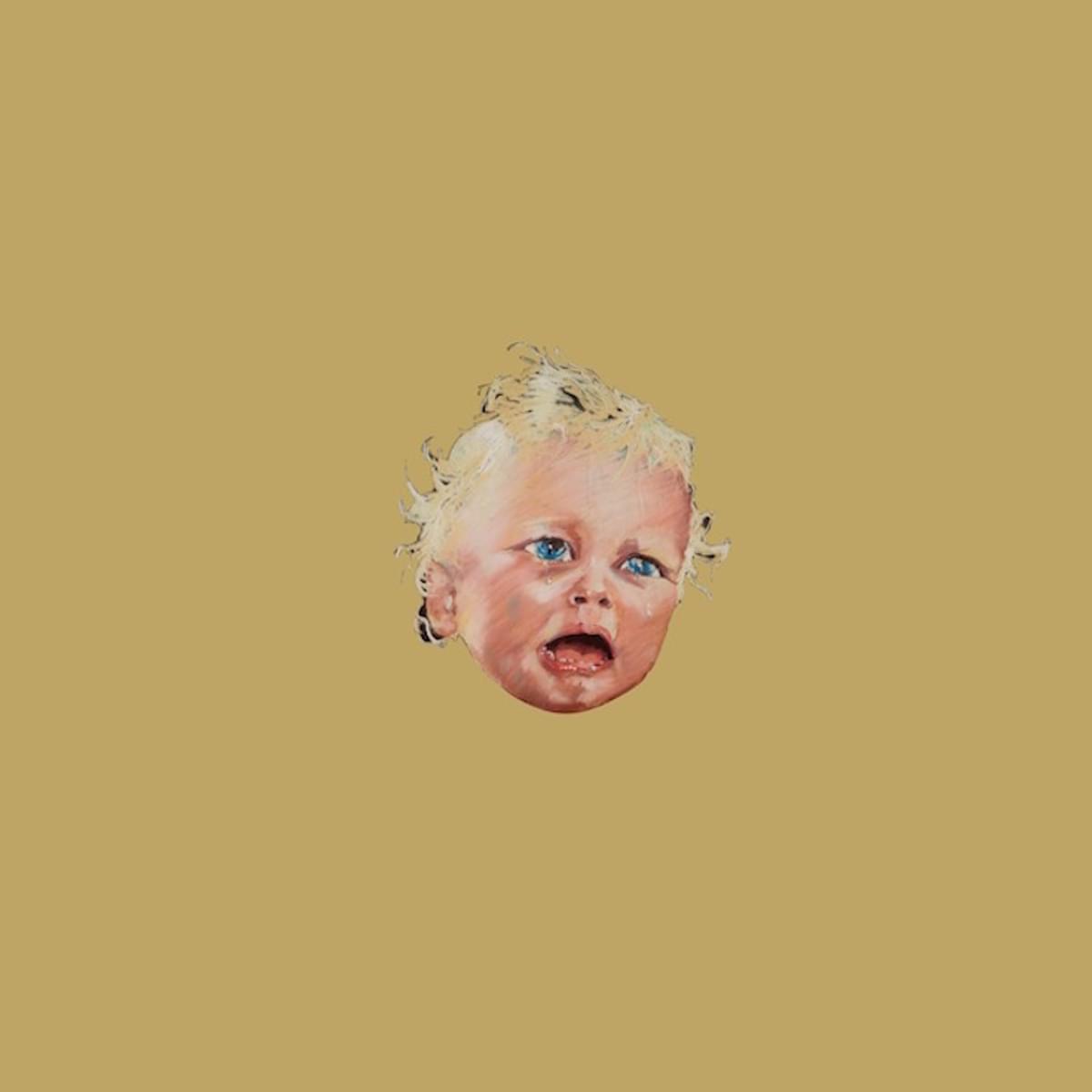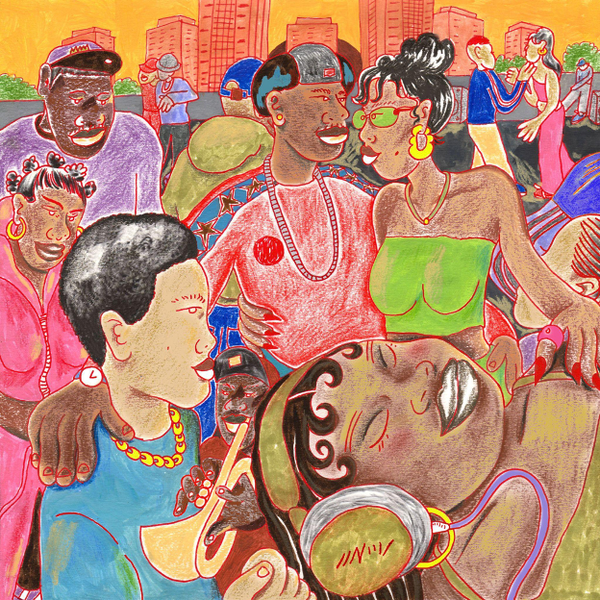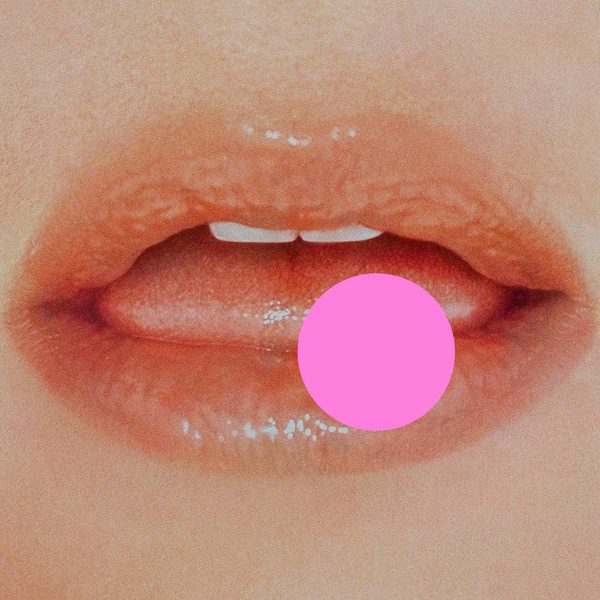
Best Fit Artwork of the Year 2014: Swans - To Be Kind
“Context changes everything; that image on the cover of a Swans album changes the context of how it is viewed.” Michael Gira, November 2014.
There’s a duality at play in the series of images, painted by Bob Biggs, used for the cover art for Swans’ To Be Kind album.
On first glance, the six toddler faces cast in bright yellow tones are utterly mundane; Biggs’ ‘portraits’ render us stupefied in their banality, so every day and regular they would appear to be. We see children every single day, crying or at peace – does it say something about us if we don’t react to them with whatever emotion they’re expressing? Taking Biggs’ paintings on their own, forgetting the music of Michael Gira’s band, the aforementioned duality comes into play; the quotidian nature falls away with a shocking quickness and they become unsettling portraits, no matter the emotional state of the child.
“Things The Mind Already Knows” is a Jasper Johns quote, relating to the US artist’s paintings of familiar objects such as flags (Johns’ series of works interpreting the Stars and Stripes is a landmark of modern art), beer cans, signs and so on. Johns tried to re-engage the audience with these “things” by imbuing them with a sense of the unknowable; take the flag paintings: how one relates to them can depend on when you first experienced them, where this experience took place and what your relationship to the flag, or to the United States, happens to be.
The same applies to Biggs’ children; we know that under the placid, static surface that infants suffer from explosions of emotions, whether it be fits of laughter, uncontrollable crying or more physical expressions of emotion like pissing, shitting or vomiting – this affects each and every one of us in a different way and therefore we engage with Biggs’ work in different ways. Swans’ music changes that again.
Before we get to To Be Kind, it’s important, one feels, to place its artwork within the Swans aesthetical canon. Gira explains to me that Young God “always chose a strong central or iconic image” for album artwork, something which is evident from debut album Filth. Simple red, white and black colours are set off by a monochrome photograph of bared teeth completely appropriate for the aggressive, industrial music contained within. Cop repeats the striking white/black/red theme, and this time the central image is a black and white photo of an obese body, a visual representation of Gira’s visceral, body-obsessed lyrics. By the time Swans leave the abrasion behind, already on the path to the band we find on To Be Kind, the slower and more minimal sound is reflected in the art. Greed has a bold dollar sign, as does Holy Money, while Children of God uses crosses to mirror religious themes explored by Gira. There’s a diversion away from this when it comes to White Light From The Mouth of Infinity and Love of Life, both of which use artwork by Deryk Thomas: “It’s like Hieronymus Bosch at Disneyland,” says Gira of the artwork, which he says was chosen at a time of “general muddle-headedness”. He goes on to say that despite it lacking that central iconic image at the time, it was something he’d rectify later: “I did cut out the bunnies in the reissues and make them into icons…but I love Deryk’s paintings, that’s why I used them. I think they’re wonderful.” The Bosch at Disneyland guide is quite apt: it’s that corruption of basic innocence, or of humanity, that Swans continued to explore in those two albums, Gira continuing to be unforgiving in his analysis of love, sex and the people around him.
Those lurid, colourful works are something of a pointer to latter-day Swans art; although The Great Annihilator and Soundtracks For The Blind returned us to start, minimal design with an emphasis on band name and title, the rebirthed Swans whom Gira brought back in 2010 dispensed with any sort of lettering on the cover. “It was a conscious decision to let the music speak for itself,” says the bandleader of the new(ish) art direction. My Father Will Guide Me Up A Rope To The Sky was new Swans writ large; Beatrice Pediconi’s work is analogous with both Johns and Biggs – it’s mysterious and constantly asks you to reengage or reinterpret what is going on in the painting. Pediconi’s art also has that duality; part controlled science experiment, part uncontrolled creative freedom thanks to the unpredictability of paint coming in contact with water…and that matches with Gira’s musical approach. Songs from 2010 onwards, while having a structure formed by Gira playing the skeleton of the track on acoustic guitar or bass, are allowed to move, change and drift over long running times. Uncontained, just like Pediconi’s art.
Gira described The Seer as being “unfinished”, and there’s elements of that in the album artwork. He admitted that the strange, wolf-like creature emerging from the shadows, complete with Gira’s own teeth, should create more questions than it answers and that is certainly true, especially when you add in the “exploding posterior” requested of the artist Simon Henwood by Gira. The Seer does get to what Swans see as the “animal core” of rock music, dispensing with what is unnecessary so this feral, primal figure depicted on the cover is perhaps appropriate – you’d assume all this wolfman needs to survive is the basics, and that’s all Gira requires now from Swans.
And so to To Be Kind; on analysis, it fits perfectly in the canon. It’s as inscrutable as those albums with the stark and minimal images and lettering, it places innocence in unfamiliar surroundings just as Love of Life did with the burning bunnies, and the music does allow you to question it and return to Biggs’ portraits with fresh eyes. Gira replies with a gnomic statement when I ask him to explain the meaning behind it: “I guess it’s like if you have three doors, and each one of them says enter, but only one of them – or none of them – leads to a brick wall. That’s how the artwork is. I try to find images that both point directly at the music and lead away from it simultaneously.”
For me, it’s about tension under the surface as much as it is about the how, where and why of how we approach the toddler portraits; the crying child betrays the emotion and noise just being held back by Gira and Swans on To Be Kind. The peaceful, beatific moments give way to primal noise as the tracks buckle under the weight of basic human emotion, but there’s also a certain tenderness at play on the record and - admittedly to a lesser extent - in the artwork. The album is peppered with references to love, and when one takes that leitmotif back to Biggs’ art, then we’re perhaps looking at Gira’s reflections on love, family and children. It’s extremely hard to look upon the baby heads and nod sagely, concluding that these are loving portraits – there’s just too much unsaid, too much going on below the surface. They are just too unsettling to be truly and completely about love, and that means we end up back where we started, engaging with Biggs’ work through circumstance.
To Be Kind, while ruminating on love, remains a record shot through with tension and controlled aggression, exposing innocence to all the crap in the world; it’s also minimal and continues the Swans way of approaching life with honest and visceral lyrics, and music that leave us with more questions than answers due to the expansive, constraint-free approach of Michael Gira. And so the Bob Biggs baby heads contain all that and more; the art takes the “things the mind already knows” and allows us to make the familiar something entirely new through music and personal experience. Where you go from there is up to you, but know that when you go back and view those images you will find it hard to escape Swans, and the music of To Be Kind.
To Be Kind was released this year via Young God / Mute.
Get the Best Fit take on the week in music direct to your inbox every Friday

Gwenno
Utopia

KOKOROKO
Tuff Times Never Last

Kesha
.





